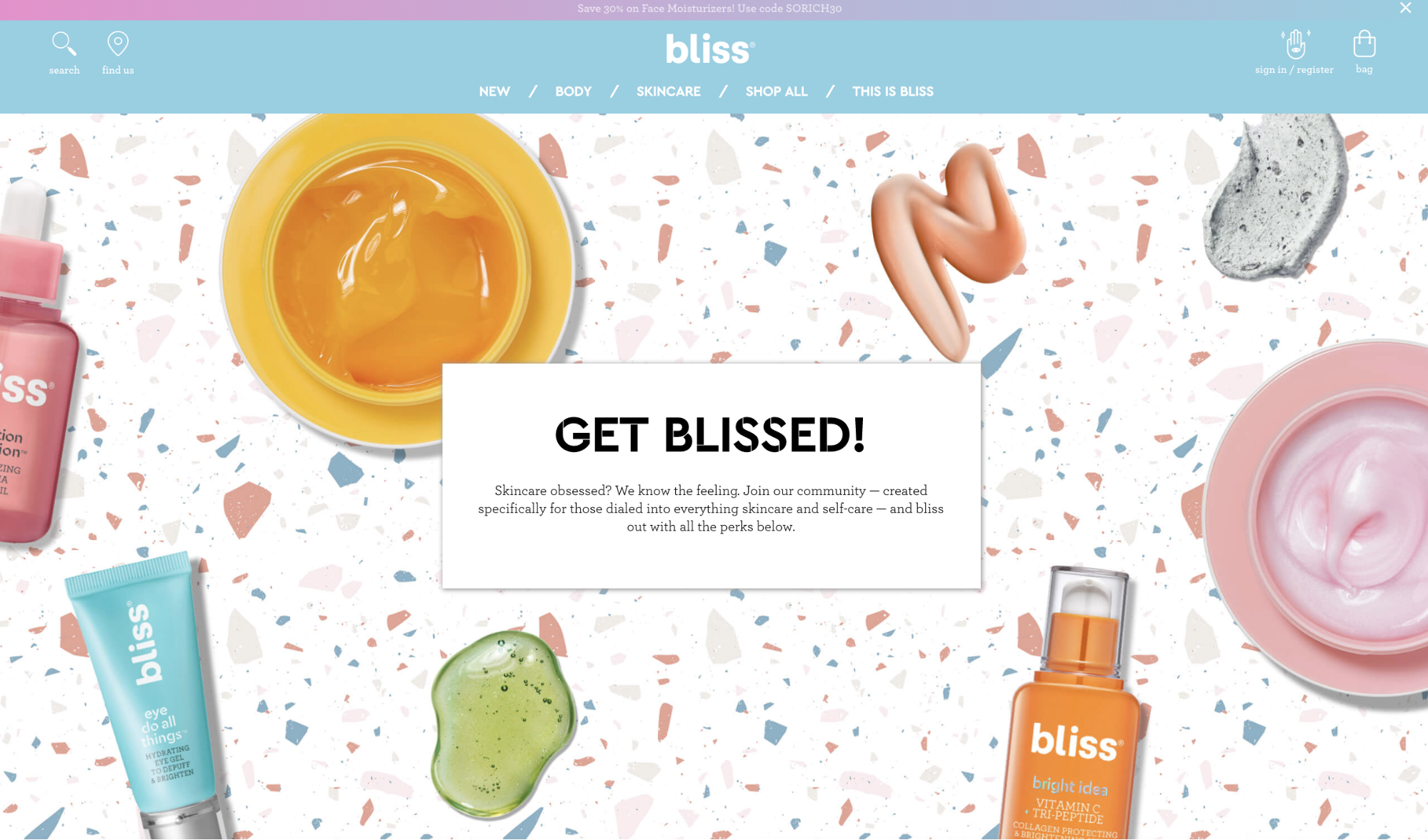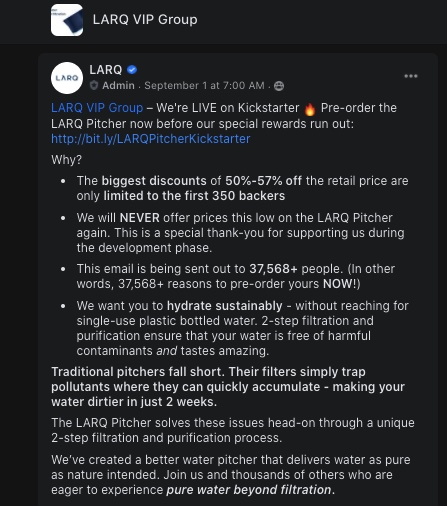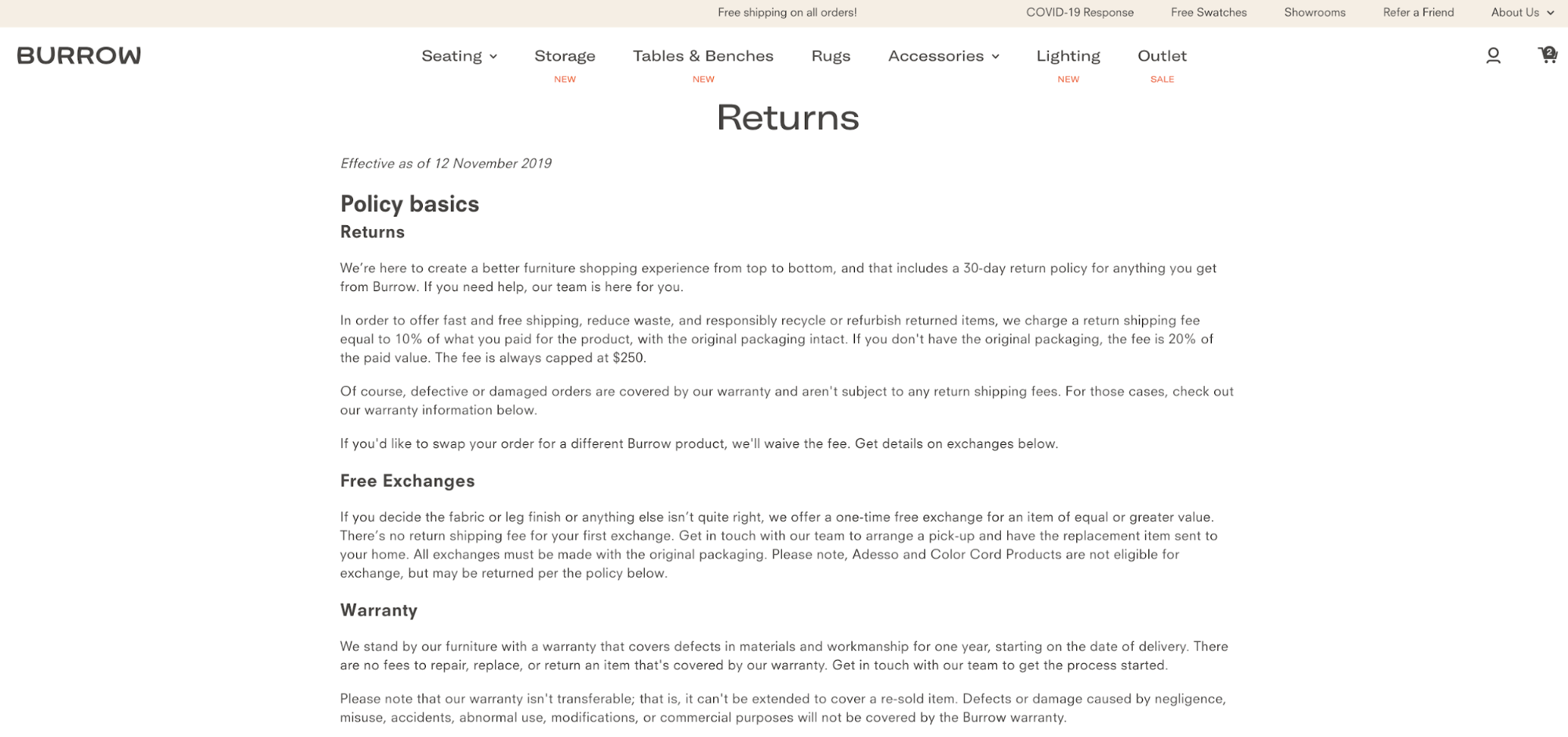
Nothing is more important to a business than customers. After all, it doesn't matter how amazing your products are or how much better they are than the competition if no one is buying them.
Customers, both new and existing, are an asset, but existing customers are especially valuable. Shoppers who come back repeatedly hold up the foundation of your business, providing a steady revenue stream at a lower investment compared to the costs of acquiring new customers. One study found that return buyers account for 15% of all transactions and spend an average of three times as much as one-time shoppers — and that's a big deal.

For some companies, acquiring new customers is a primary focus, but this can be a mistake. Failing to take the necessary steps to retain current customers can mean lost revenue and stilted growth, and that's bad for business. Instead of losing out on potential profits and doing damage to your bottom line, use these six customer retention strategies to keep your loyal fan base active and engaged.
What Exactly is Customer Retention?
Customer retention is exactly what it sounds like: the art of retaining customers.
The process of customer retention, however, can vary. Converting customers and keeping them coming back is different from one industry to another and even from one company to another. Regardless, if you want your buyers to return to you, the key is to provide a great customer experience.
Many businesses focus too much time and energy on acquiring new customers and neglect the important aspect of developing relationships with current customers. By providing them a positive buyer journey through checkout and beyond, you improve their loyalty and affinity for your brand.
The strategies that will be laid down below are part of a foundation of ensuring a great customer experience. The better the customer experience, the more likely you're able to retain customers.
So, how do you know if you're retaining customers? Luckily, there's a formula to help you figure out the answer.
How to Calculate Customer Retention
To calculate customer retention, first choose a period of time, like a month or a year. Then, subtract the number of new customers (N) acquired in that time frame from the total number of customers remaining (E). Divide this number by the number of customers at the start of the period (S) and, to get a percentage, multiply the result by 100 (CRR=((E-N)/S)*100).
For example, let’s say you want to calculate the retention rate for a particular month. You see that you had 105 customers at the start of the month (S) and that you acquired an additional 10 customers (N) during that month. At the end of the month, you lost 30 customers, leaving you with 75 existing ones (E). Following our formula, we would subtract 10 from 75 for a total of 65 customers. Divide this number by 105 to give you a retention rate of .62. (Multiplying by 100 will give you a percentage - in this case, 62%).
Bottom line?
The higher your customer retention rate, the better your position in the marketplace.
Benefits of Focusing on Building Customer Retention
As we mentioned earlier, when it comes to building a sustainable business, keeping customers coming back is integral to organizational growth.
Let’s take a closer look at how focusing on customer retention benefits your business.
1. Customer retention is cheaper than customer acquisition
Keeping the customers you have is always cheaper than acquiring new ones.
Getting new customers takes a lot of marketing. You need to target your primary demographic, place effective ads that generate brand awareness, and pitch enough benefits for web users to give you a shot. Existing customers, on the other hand, already know who you are and what your company does.
If you think the gap is small, think again. It costs around five times more to acquire a new customer than to keep one you already have. Furthermore, when selling to a new prospect, there is a 5 - 20% chance of making a sale. When selling to an existing customer, probability jumps to 60 - 70% meaning that by placing an emphasis on existing customers makes it easier to generate revenue and grow your business.
Retention isn't a given, so all businesses still need to invest in loyalty strategies, but spending in this area doesn't have to rival new customer advertising.
2. Valuable, genuine feedback
New customers make purchases for all kinds of reasons: some simply want to try a product; some got a recommendation from a friend; some saw your targeted advertising. All of these are good reasons to try your brand, but they don't send much of a message about your products.
Returning customers can send a clear message through purchase behaviors. The products they purchase most regularly can speak to popularity and quality, while items purchased once and never again can be indicative of problems. Repeat customers are also more likely to provide feedback when asked because they have a vested interest in your store and your products.
3. Increased word-of-mouth advertising
Word of mouth marketing isn't dead in the internet age. Instead, it just exists in a slightly different form. Online reviews are now a critical part of the purchasing process. Few consumers make purchases without any research, which means review sites, like Yelp! and Google's review platform, are now more important than ever.
Returning customers are more likely to leave positive reviews than new customers, and the more positive reviews you have, the more new customers you will be able to convert.
In today's market, many consumers are inherently distrustful of marketing materials. However, they are strongly influenced by referrals, both online and from friends and family members. Younger generations are very vocal about their shopping experiences on the web; 90% of millennials share their opinions about brands and products online.
Before Getting Started, Identify Your Business Stage
Customer retention strategies can work in a myriad of ways. While some are industry-specific, others will be heavily influenced by the stage of your business. A brand new company just getting started will have far different requirements than an existing brand.
Before taking your ideas to market, be sure they're appropriate for where you are in the business life cycle. For example, in the beginning, acquisition — or the process of acquiring new customers — can be far more important.
- Just opened doors: If you're brand new to the business, attracting new customers is likely your primary priority. In this stage, it's more important to build a customer base than to keep customers around. You may choose to put a few basic retention strategies in place, like strong customer service and email communications, but the focus should be on growing, not sustaining.
- Making more sales: As your business ramps up, you'll want to start looking into more retention strategies. Your focus should still lie heavily on the acquisition, but laying the groundwork now can give you valuable resources down the road when sales stabilize.
- Consistently selling every day: When you're making consistent sales, your customer base is starting to solidify. This is the best possible time to make big steps toward retention measures. By acting early, you can create a foundation sooner and better solidify your business.
- Great foundation: When you have a strong foundation in place, retention needs to be number one. Without nurturing your loyal fans, you may find your foundation slipping away – and that's the last thing you want. At this stage, consider segmenting your customers. While retaining all customers is ideal, you may want to put a bit more energy into high-value ones.
- Established and growing: When you're established but with growth plans, your attention should be split. More money can slowly move toward customer acquisition, but retention should remain a strong area of focus.
Once you figure out your business stage, consider investing time in customer segmentation to better understand your customer base. Segmentation will let you better specify, communicate, and serve your customers while increasing trust, loyalty, and revenue.
In B2B, common segments include:
- Industry
- Number of employees
- Products previously purchased from the company
- Location
In B2C, common segments include:
- Age
- Gender
- Marital status
- Location
- Life stage
6 Strategies To Attract Repeat Customers
Some customers may return to you over and over again without any prompting, but others might need a little more incentive. These six strategies for attracting repeat customers can give your fans the fuel necessary to return to your store repeatedly.
1. Provide exceptional customer service
Customer service always counts. Treating your customers well is an excellent way to set yourself apart, especially when the eCommerce market is so flooded with competition.
Some businesses think customer service matters less when face-to-face interactions aren't a part of the equation, but this isn't true at all. When there's no way to greet a customer with a smile, it's essential to capitalize on every other opportunity possible.
Great customer service in an eCommerce environment can be managed in a few different ways. First, it's important to have plenty of information related to policies on your site, from FAQs to detailed return information. Customers shouldn't have to call you to get basic answers. Second, customers should have an easy way to contact you if necessary. This can take the form of website chat functions, email, or phone — and ideally, all of the above.
When customers do contact you via voice or email, be sure you can respond in a timely manner: the same day, if possible, but no more than 24 hours.
Lingerie brand Natori makes customer service simple with a live chat feature on the bottom right of the screen that activates immediately.

Part of great customer service also extends beyond the purchase. Having a hassle-free return policy can make a big difference to customers when they’re considering if they would shop at your store again.
When you have an easy returns process, you need to make sure it's accessible, too. Take Burrow, for example. Buying furniture without trying it out first can be a big commitment, so the company puts consumer minds at ease with a clear and easily accessible return policy. The website FAQ outlines everything important, from shipping costs to free exchange opportunities.

2. Building a relationship with customers
Customers like to be acknowledged. Those who are loyal want to feel valued by your business as if you place the same importance on them as they do on you. Acknowledgment drives engagement, which drives sales.
This may sound like a big ask, but it doesn't have to be a challenge. Something as simple as a greeting on the homepage when customers log in can lay the foundation for a personalized journey (your customer segmentation homework will come in handy when identifying customer’s motivations and pain points), letting customers know that you see them as a person and not dollar signs.
And that's not the only strategy you have at your disposal. Cookies make targeting customers with personalized recommendations easy, giving you a way to suggest new or alternate products that can complement previous purchases. This can function as an email as well: by using customer purchase history to inform interests, you can send promo content with discounts on items customers are most likely to enjoy.
Even little steps, like birthday discounts for specific things that customers prefer, can make them feel appreciated and loyal.
3. Maintain communications with your customers
No one likes to get 100 marketing messages a month from the same company, but that doesn't mean silence is a better strategy. Keeping in contact with customers is a key way to keep your brand on their radar.
Most consumers purchase from several different places, whether due to convenience or divided preferences. As such, if you don't make yourself known from time to time, customers may forget about you entirely.
Email is the best way to do this, and many companies already take advantage of marketing emails to push promos and new products. However, seeking sales isn't the only reason to send an email. You can also distribute newsletters highlighting things like community involvement, awards, and fun facts related to the business. This keeps customers engaged in a way that doesn't seem like solicitations.
Some businesses find success with text messages, too. While less common, texting can be a little more familiar to consumers, especially younger ones. Sending promos via text can augment email strategies and keep your business name fresh and visible in shoppers' minds.
4. Reward loyalty and encourage brand advocacy
Everyone loves rewards. With a well-positioned loyalty program, you can reward those customers that stick with you. Loyalty programs work by rewarding customers for making purchases they were probably going to make anyway.
For a loyalty program to work as a sustainable competitive advantage and help with retention for a business, it needs to:
- Offer something of value to its customers
- Try to differentiate itself from the competition as much as possible
- Communicate effectively to keep engagement up
Loyalty programs can operate in a few different ways, and the approach you take will likely depend on the specifics of your business and the kinds of discounts are favored by your shoppers. Regardless, if your program is intelligent and mirrors industry norms, you'll likely see your program pay for itself before long. Virtual badges, points, discounts, and freebies are a small price to pay for ongoing revenue streams.
One of the best examples is a frequent-flyer program.
Offered by many airlines, frequent-flyer programs are designed to encourage customers enrolled in the program to accumulate points (also called miles, kilometers, or segments) which may then be redeemed for travel and other rewards.
Another path you can take is to build an affiliate program to incentivize your customers and drive sales.
Beloved cosmetics brand Bliss does a great job with their affiliate program. Enrollment is easy, and there are two options to choose from based on customer preferences: Ambassador and Influencer. One is more casual while the other requires more involvement, giving regular shoppers plenty of perks and opportunities.

5. Delivery reciprocity
Your customers are loyal to you, so why not be loyal to them? It's easy to reward customers who shop with you a lot in ways they may not expect using reciprocity principles.
Reciprocity comes in two major forms: surprise reciprocity and trumpeted reciprocity. Surprise reciprocity is, of course, a surprise. Customers don't know they're going to be rewarded with something like free merchandise, so they're honored and excited when the opportunity arises.
Trumpeted reciprocity, on the other hand, is a strategy in which a company makes a reciprocal gesture that may not be large, but is accompanied by a lot of fanfare — for example, a beta test of a new feature. By sending out an email making claims about exclusive opportunities for a select audience, for example, customers will feel singled out in a positive way, even if the gesture isn't necessarily notable by itself.
Take, for example, Larq's new and innovative water pitcher. Larq first contacted their VIP customer base about their new product launch on Kickstarter. Loyal customers who backed the product on Kickstarter had the opportunity to receive promising perks and major discounts.

6. Align internal teams
Internal team collaboration is vital.
Forming new teams and departments is inevitable when your organization starts growing. While its intent is to make things better and more productive, usually what happens is an ever-growing gap of discrepancies in messaging, priorities, and goals between separate teams.
The solution is aligning internal teams, especially marketing and sales.
According to MarketingProfs report, companies with tightly aligned sales and marketing teams experience 36% higher customer retention rates and 38% higher sales win rates.
A good start would be to explain in detail how the partnership would benefit teams and the organization.
Then create a shared file system of your marketing and sales assets such as graphics, videos, stats, case studies, testimonials, and messaging to establish a single source of truth (SSOT).
Another step you can take is to start regular meetings between the teams or team leaders to ensure both are in sync and all the plans are discussed before the execution begins.
While it’s not easy to convince people to take on more work, it’s well worth it to educate and train internal teams to work together as it reduces errors, saves resources, and increases efficiency that affects your business bottom line.
Conclusion
It's easier and cheaper to retain the customers you already have than to acquire new ones. Returning customers are more likely to spend more with you, shop more frequently, and say good things about you online and in-person. By playing up customer retention strategies, you can easily maintain your existing base of customers and drive additional revenue — and who doesn't want that?
Author: Leigh-Anne Truitt
Bio: Leigh-Anne Truitt is an SEO Specialist at BigCommerce where she researches and discovers strategies to increase organic traffic. Prior to joining the e-commerce industry, Leigh-Anne perfected her marketing skills at The University of Texas at Austin and CanIRank.






